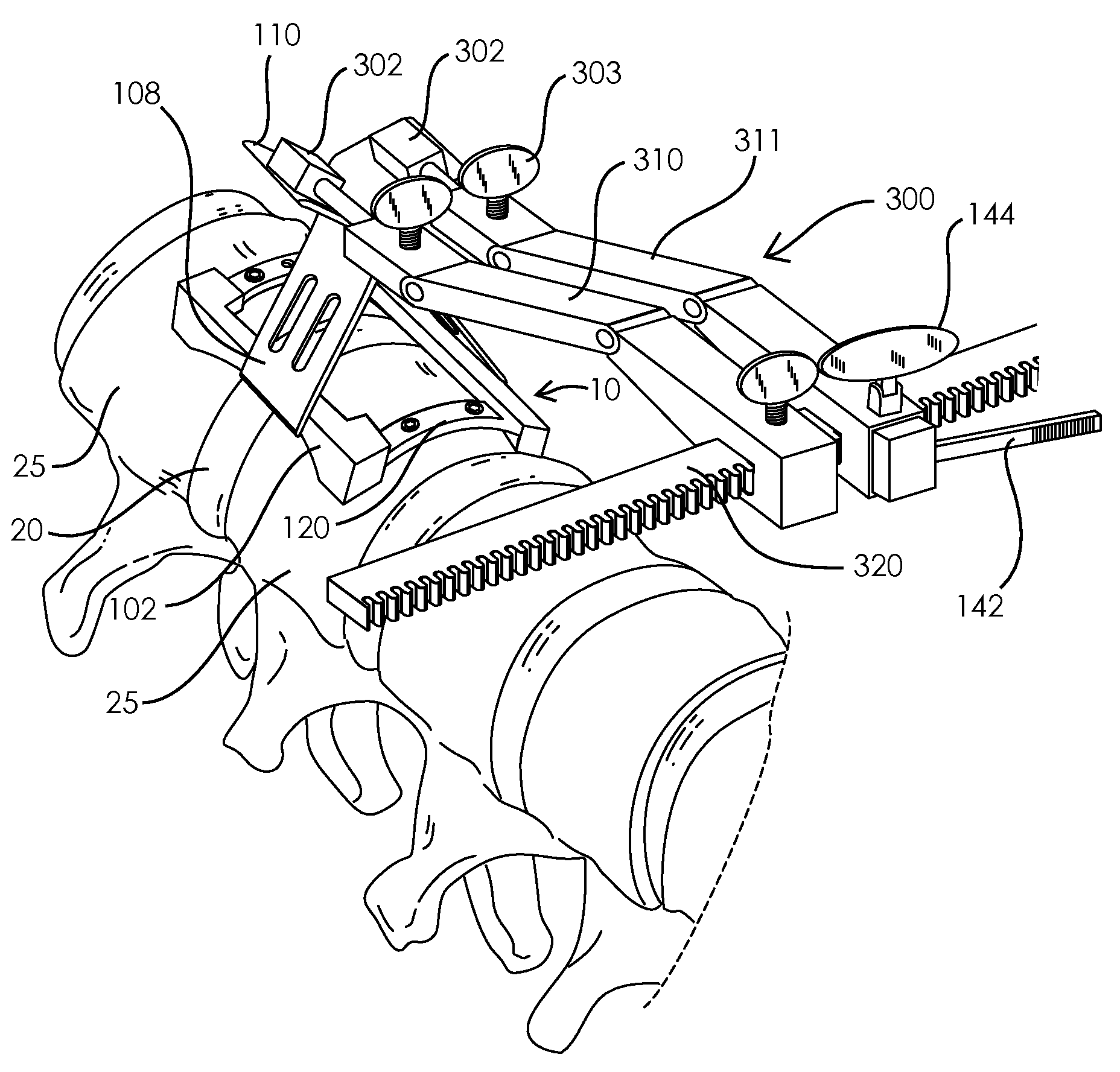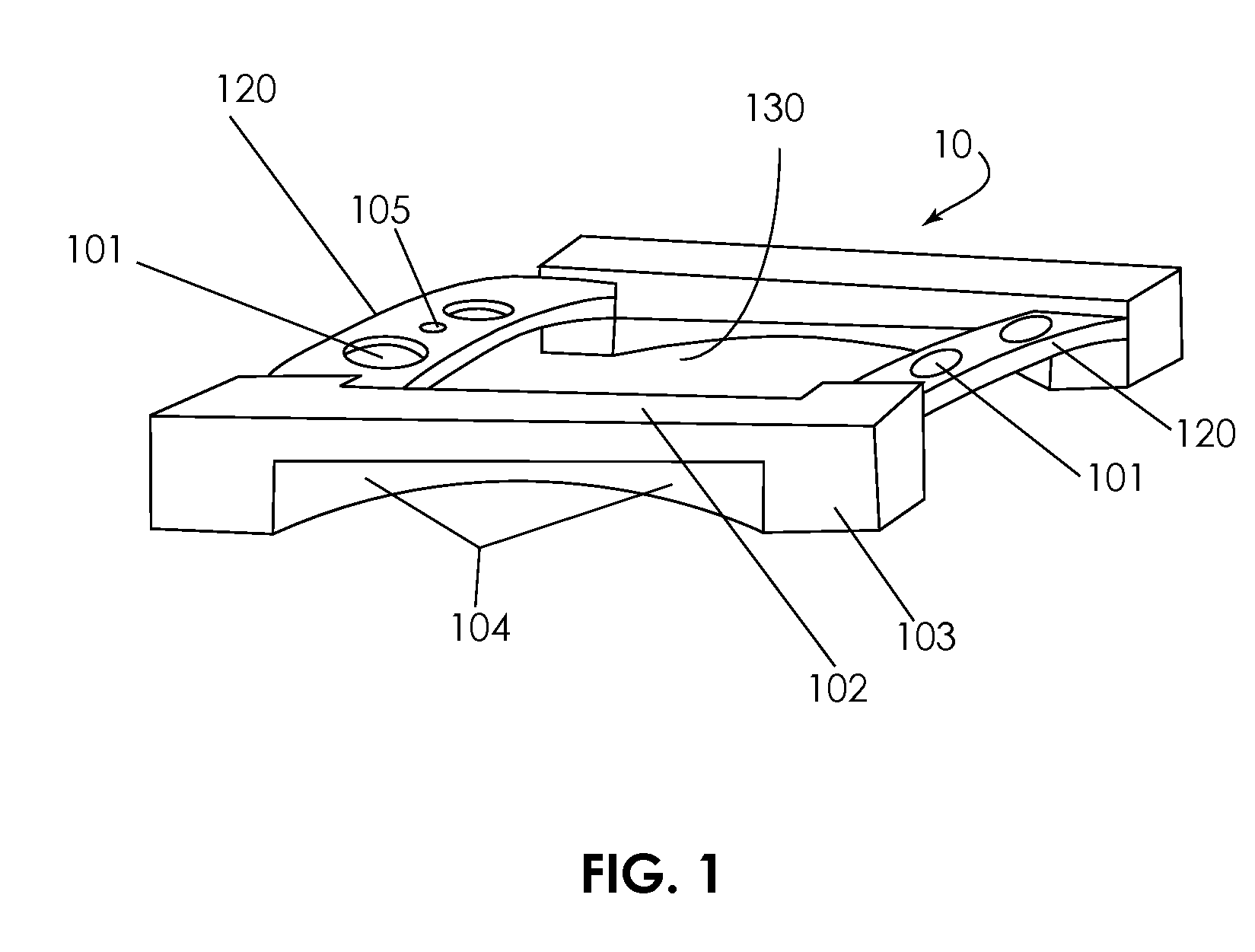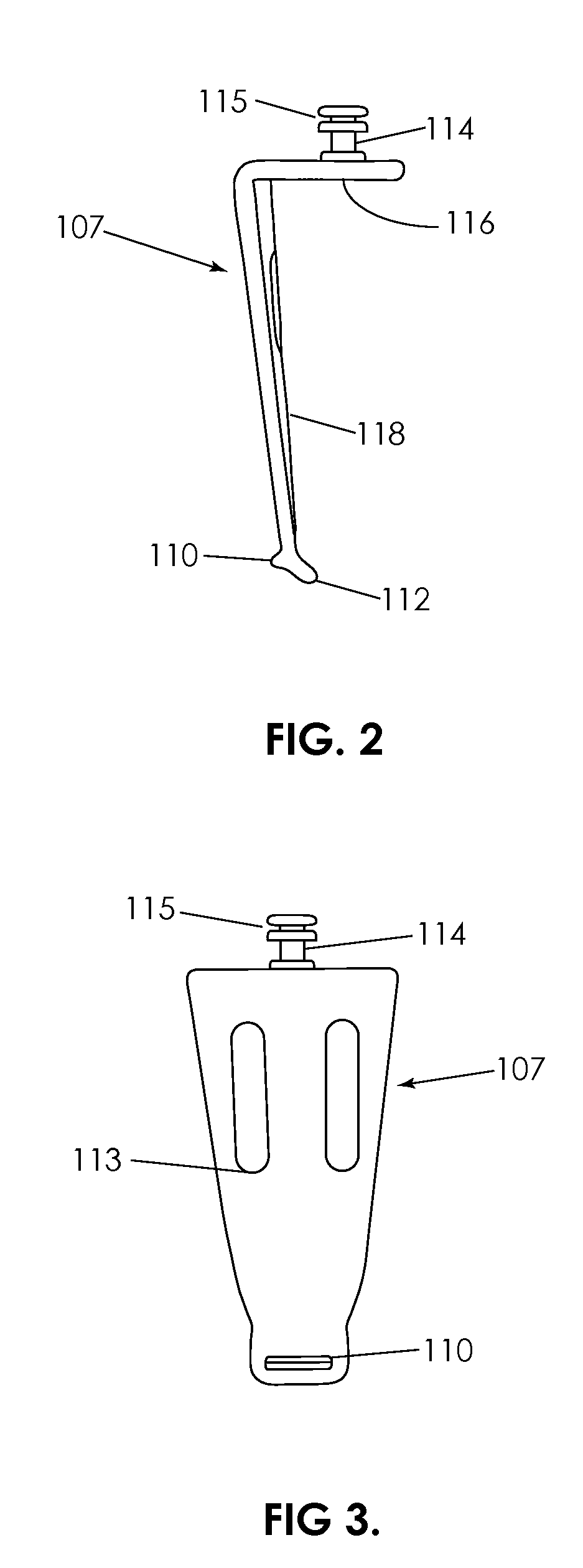Device and method for tissue retraction in spinal surgery
a tissue retraction and spinal surgery technology, applied in the field of temporary inserting surgical devices, can solve the problems of significantly elevating the risk of injury to adjacent soft tissue structures, prone to undesirable shifting or migrating of the retractor system within the wound, and currently available retractor systems can be considered less than completely satisfactory, so as to maintain soft tissue retraction, less manipulation, and less damage. the effect of damag
- Summary
- Abstract
- Description
- Claims
- Application Information
AI Technical Summary
Benefits of technology
Problems solved by technology
Method used
Image
Examples
embodiment 300
[0046]FIG. 7 is a top plan view of two retractor blades 107 outwardly spread and a bone plate 10 there between. The view shows the interaction of protrusions 110 of the retractor blades with side wall depressions on the bone plate 10 in situ, surrounded by retracted soft tissue 30. The impinging force of the soft tissue stabilizes the engagement between the retractor blade and the bone plate. In some embodiments, the respective positions of the protrusions 110 on the retractor blades 107 and the depressions 104 on plate 10 may be reversed. Alternatively, other inter-engaging features may be employed instead of the exemplary protrusions and depressions to allow retractor blades to temporarily and pivotably engage with plate. For example, a curved tongue may be used instead of protrusion 110, and a mating slot through plate 10 may be used instead of depression 104. The upper aspect or headplate 116 of retractor blades 107 can be seen engaging an angular adjustment mechanism 200. (Deta...
embodiment 108
[0048]FIG. 8 shows a perspective view of an implanted bone plate 10. FIG. 9 shows a perspective view of the implanted bone plate 10 as in FIG. 8, with two retractor blades 108 now pivotably engaging the bone plate at their lower aspect 109 and pivotably engaging an adjustment mechanism 300 at their upper aspect 110. The bone plate is implanted on vertebral bodies 25 overlaying intervertebral disc 20. The blades are shown in an upwardly convergent configuration, as they would be prior to retracting adjacent soft tissue (not shown). The upper aspect 110 of the retractor blades 108 shown here differ compared to the upper portion of retractor blades 107 as shown in FIGS. 2-6, in that the embodiment 108 does not have an extension element 115 on the centrally-mounted post 114. The broad angled upper aspect 110 of retractor blade 108 is engageable with a pivotable engagement feature 302 of adjustment mechanism 300. This form of pivotable engagement between a retractor blade and an adjustme...
PUM
 Login to View More
Login to View More Abstract
Description
Claims
Application Information
 Login to View More
Login to View More - R&D
- Intellectual Property
- Life Sciences
- Materials
- Tech Scout
- Unparalleled Data Quality
- Higher Quality Content
- 60% Fewer Hallucinations
Browse by: Latest US Patents, China's latest patents, Technical Efficacy Thesaurus, Application Domain, Technology Topic, Popular Technical Reports.
© 2025 PatSnap. All rights reserved.Legal|Privacy policy|Modern Slavery Act Transparency Statement|Sitemap|About US| Contact US: help@patsnap.com



